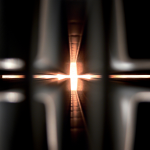How do I remove a radiator?
It is the kind of task which can take just a few minutes to complete if your competent with what you are doing or £60 and quite possibly a day off work if you call in the pros. It might be that your currently decorating your home and can’t quite cover that last bit of wall surrounding your radiator. Or maybe your radiators are looking tired and are in dire need of a facelift, what ever the reason we have put together a straightforward guide to help you conquer the simple DIY task of removing a radiator.
Equipment List:
- Bucket, bowl or painting tray
- Towel or cloth (you could use an old piece of clothing which is fit for the bin!)
- An adjustable spanner
- PTFE Tape (don’t worry if you have no idea what this is, you can readily find PTFE tape at any DIY store, It is also known as plumbers tape which is used for sealing pipe threads for a tight and neat finish.)
- Radiator key
- Wire wool
- New radiator
- Wall mounting brackets
- Drill
- Masonry bit


